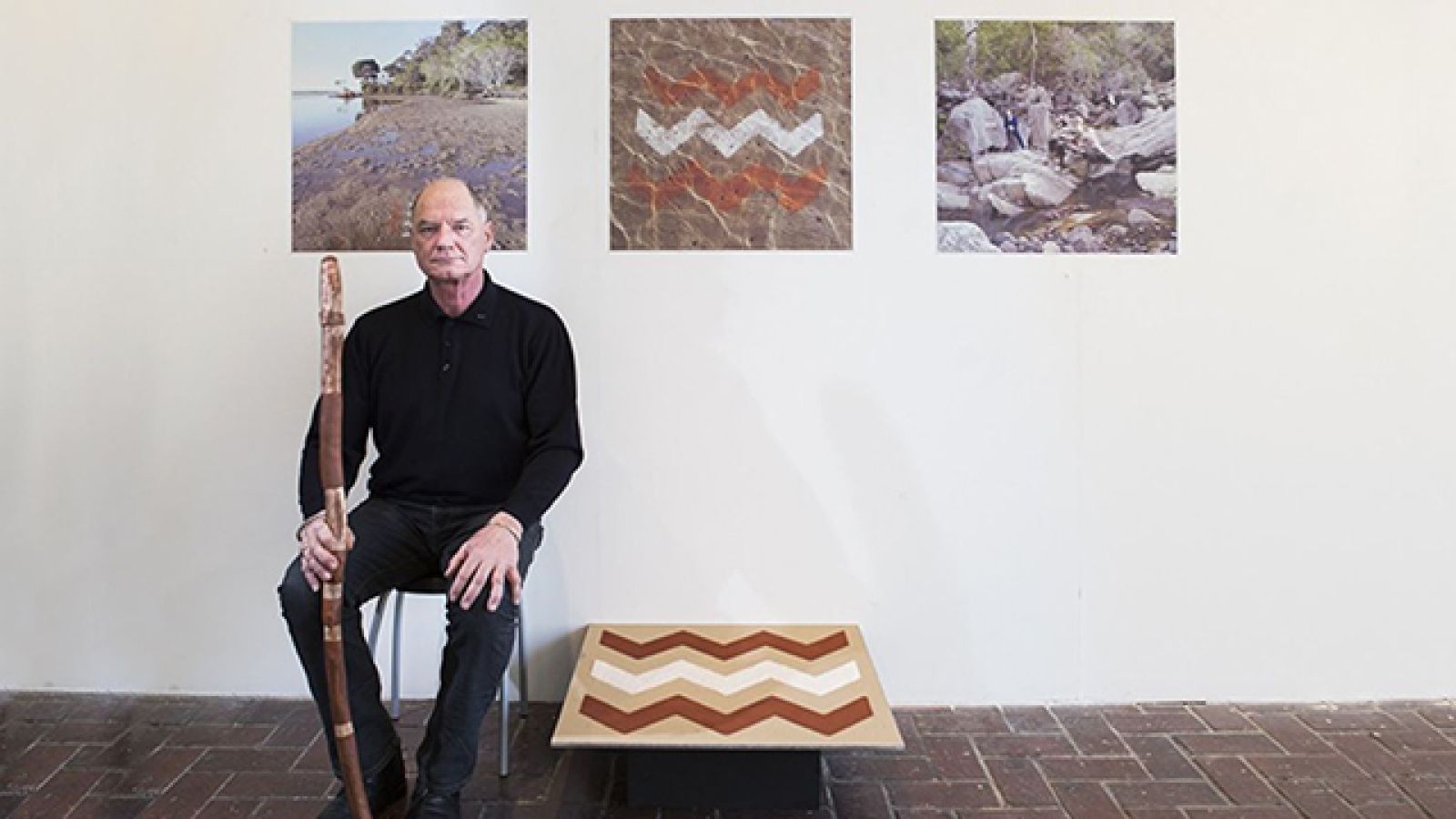Art students showcase works inspired by historic Indigenous trail

ANU School of Art Masters student Harijs Piekalns and his work 'The Source of the Towamba River and Kiah Inlet: A Different Flow'. Photo by Stuart Hay.
The works from a group of students, who returned from a field trip to discover the cultural links between Indigenous communities and their local environment along the New South Wales south coast, have gone on exhibition at the ANU School of Art.
The 12 students attended a week-long field trip to Eden in April to learn about the significance of the historic trail, known as the Bundian Way, and its connection to the local communities.
The historic 380-kilometre pathway runs from Mt Kosciuszko to Twofold Bay on the far south coast of New South Wales.
"We are thrilled to have worked with south coast based Yuin artist Natalie Bateman, who mentored our group and shared her story at Jigamy where we were camped - which was a rich and powerful aspect of this year's course," said School of Art Field Research Coordinator Amanda Stuart.
Ms Bateman's work features in the exhibition alongside student work, as does some work by Emeritus Professor John Reid, who is a mentor and the original architect of the Environment Studio.
The students also learned about the complexities around exhibiting and representing Indigenous cultures in institutions, while at Jigamy.
"This course has enriched my knowledge and understanding," said third year art student Keith Bender.
"Personal stories from Aboriginal people, about how life was when the white fella arrived, are absolutely priceless, and the heart-felt disclosure with the students has just been incredible."
Keith is a third year student studying a Bachelor of Visual Arts in sculpture. Keith's work is titled 'no black interior' and sits in the centre of the School of Art foyer gallery.
"I wanted to convey this idea of tracks that had been interrupted by white settlement, tracks that we're only now finding out about as part of that rich Indigenous culture," he said.
Masters student Harijs Piekalns has produced three photographs based on his time on the field trip.
"The photographs described the headwaters and the mouth of the Towamba River. Within the photographs I've used the Latvian runic symbol for the Earth," he said.
Harijs' work also references the route taken by colonial adventurer and Australia's largest landholder in 1845, Benjamin Boyd, and a marine artist called Oswald Brierly, who in 1842 travelled up the Towamba River to Twofold Bay, where Brierly documented and sketched the first European record of landscapes and Aboriginal cultures in the area.
"They were about taking from the land. This work of art is about giving back to the land," he said.
Beside Balawan includes 53 exhibited works from sculpture, painting, textiles, drawing, print media and collage, photography and ceramic studio practices.
Beside Balawan is on display in the ANU School of Art foyer gallery until 20 August.